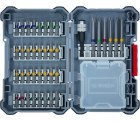Bland Altman Agreement Method
The Bland-Altman agreement method is a statistical technique used to evaluate the level of agreement between two methods of measurement. This method was first introduced in a paper by J. Martin Bland and Douglas G. Altman in 1986 and has since become a widely used method in various fields, including medicine, psychology, and engineering.
The purpose of the Bland-Altman agreement method is to assess whether two methods of measurement produce similar results when measuring the same variable. The technique involves comparing the difference between the measurements made by the two methods against the average of the two measurements. This difference is plotted on a graph against the mean of the two measurements, and the limits of agreement are calculated.
The limits of agreement are the upper and lower bounds within which 95% of the differences between the two measurements are expected to lie. If the limits of agreement are narrow, then there is good agreement between the two methods of measurement. If they are wide, then the two methods of measurement are not in agreement.
There are several advantages of using the Bland-Altman agreement method. Firstly, it is a simple and straightforward method that can be easily understood by non-statisticians. It also allows for the identification of systematic biases between the two methods of measurement, which may not be readily apparent from other statistical methods.
Moreover, the Bland-Altman agreement method is a valuable tool for assessing the reliability of new measurement techniques. By comparing the results of a new measurement method with an established measurement method, researchers can determine whether the new method is reliable and accurate.
Despite its many advantages, the Bland-Altman agreement method does have its limitations. For example, it assumes that the differences between the two methods of measurement are normally distributed, and it may not be appropriate for small sample sizes. Additionally, the method may be sensitive to outliers, which can distort the results.
In conclusion, the Bland-Altman agreement method is a useful statistical technique for evaluating the level of agreement between two methods of measurement. Its simplicity and ability to identify systematic biases make it a valuable tool for researchers in various fields. However, it is important to be aware of its limitations and to use it in conjunction with other statistical methods to obtain a comprehensive understanding of the data.













Schreibe einen Kommentar:
Kommentare:
Zu diesem Beitrag gibt es noch keine Kommentare.
Dieser Beitrag kann nicht kommentiert werden